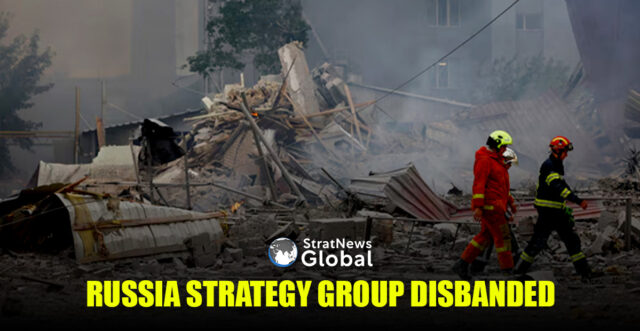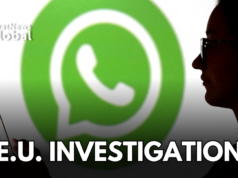In recent weeks, the Trump administration quietly shelved an inter-agency working group it had established to develop strategies for pressuring Russia to accelerate peace talks with Ukraine, according to three U.S. officials.
The effort, which was established earlier in the spring, lost steam in May as it became increasingly clear to participants that the U.S.
President Donald Trump was not interested in adopting a more confrontational stance toward Moscow, said the officials.
Despite pledging during his campaign to end the war in Ukraine on the first day of his presidency, Trump in recent months has grown increasingly frustrated that his push has yielded no breakthroughs.
He has begun saying that the United States may abandon its efforts to broker peace altogether.
Increasingly Irrelevant
In light of that threat, the working group’s task seemed increasingly irrelevant, added those officials, who requested anonymity to describe sensitive internal discussions.
“It lost steam toward the end because the president wasn’t there. Instead of doing more, maybe he wanted to do less,” one of the officials said.
The death of the working group, the existence of which has not been previously reported, is likely to deepen European allies’ concerns over Trump’s at-times conciliatory tone toward Russia and his reluctance to express full-throated support for Ukraine ahead of a pivotal summit of NATO allies later this month.
On the first day of a meeting of Group of Seven leaders in Canada on Monday, the Republican president said removing Russia from the former Group of Eight over a decade ago had been a mistake.
The final blow for the working group came roughly three weeks ago, when most members of the White House National Security Council – including the entire team dealing directly with the Ukraine war – were dismissed as part of a broad purge, according to the three officials.
The effort was set up and coordinated by high-ranking NSC staffers, the officials said, though it included participants from the State Department, Treasury Department, the Pentagon and the intelligence community. Among those working on the effort was Andrew Peek, the top NSC official for Europe and Russia, who was removed in May.
It is unclear precisely who gave the order to discontinue the effort, but the officials suggested the depth of the NSC cuts made its continuation largely untenable.
Peacemaking Efforts Stumble
Since the effort’s dissolution, Trump’s broader peacemaking efforts, which had been a central element of his campaign pitch, have hit a challenging stretch. Despite some successes – such as a U.S.-brokered ceasefire between India and Pakistan – Trump has made little tangible progress in achieving a ceasefire in Gaza, and the risk of a full-blown regional war in the Middle East has risen rapidly with the Israel-Iran conflict.
The dissolution of the group also follows a March suspension of work by some U.S. national security agencies on a coordinated effort to counter Russian sabotage and disinformation operations, Reuters reported at the time.
Nevertheless, Trump could choose to adopt a firmer stance toward Russia regardless of the fate of the working group, which was set up to develop options for the president “if he wanted to get tougher on Russia,” one of the officials said.
Some Trump allies, including Republican Senator Lindsey Graham, have publicly advocated for an expansive new round of sanctions directed at Russia, citing Moscow’s effective rejection of U.S. ceasefire proposals and the Kremlin’s continual attacks on civilian targets as proof of Putin’s recalcitrance.
Trump has said he is considering such measures, but he has also regularly faulted both sides for the ongoing hostilities.
The White House did not respond to a request for comment, nor did the Treasury Department, the State Department or the Pentagon.
The Ukrainian and Russian embassies in Washington also did not respond to requests for comment.
‘Deep Frustration’
The working group was formed in March or April at a time when some close Trump advisers were growing increasingly sceptical of the Kremlin’s willingness to reach a deal, while Trump’s rhetoric suggested he might be interested in modifying his accommodating stance toward Putin.
In an interview with NBC News in late March, he said he was “very angry” and “pissed off” at the Russian leader for raising questions about the legitimacy of Ukrainian President Volodymyr Zelenskyy.
NSC spokesman James Hewitt said in an April 1 statement to Reuters that there was a “deep frustration with the Russian government over negotiations.”
Among the topics discussed within the working group was how the U.S. could incentivise or pressure former Soviet states, as well as other Eastern European and Asian nations, to limit the flow of goods and energy into and out of Russia, said the officials.
It is unclear if Trump was aware of the working group’s formation or subsequent dissolution.
The NSC removals left few high-ranking people on the Russia file, complicating the prospects for any robust inter-agency debate on the topic.
While reluctant to discuss the details of the options drawn up by the group due to the sensitive nature of the work, U.S. officials said the group was still brainstorming ideas when it was dissolved. The group’s work was unrelated to the Russia sanctions package in the U.S. Senate.
Ideas ranged from tailored economic deals designed to peel some countries out of Russia’s geopolitical orbit to covert special operations efforts, the officials said.
One official mentioned the possibility of creating an incentive structure to push Kazakhstan to more vigorously crack down on sanctions evasion. The country, like other post-Soviet states, has been used by traders to bypass some Western-imposed import restrictions on Russia since Moscow’s expanded invasion began in 2022.
The Kazakhstani embassy in Washington did not respond to a request for comment.
(With inputs from Reuters)





